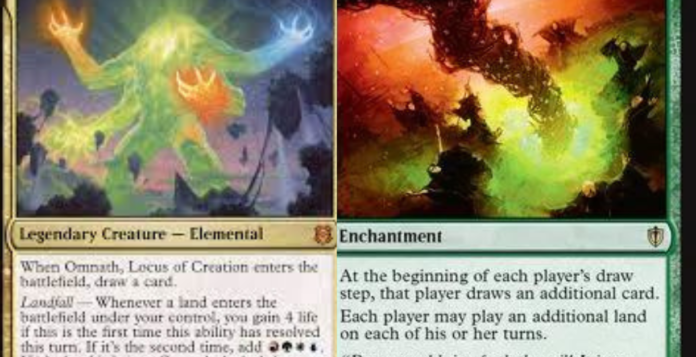We have been responding to a lot of your inquiries since the start, dear readers. The query how many lands should be in a landfall deck is what you want to know today. Although the exact cards and strategy used might affect how many lands are in a landfall deck, in general, landfall decks run more lands than other deck types.
While 24 to 28 lands is a typical range, certain decks may run even more, even as high as 30 or just a little bit higher, to guarantee steady land drops and optimise the power of landfall triggers.
how many lands should be in a landfall deck
Here’s a quick summary:
Greater land count (38–40): Perfect for decks that win the game primarily through the use of their commander and other landfall powers. These decks frequently use a large number of expensive spells and permanents.
Reduced land count (36-38): Fit for mana-curve decks and mana-alternative decks. The goal of these decks is to always take advantage of the effects of their landfall cards by playing them early.
Using cards that activate abilities whenever a land under your control reaches the battlefield is the main objective of a landfall deck. This Magic: The Gathering-popularized mechanic pushes players to incorporate more lands in their decks in order to guarantee a consistent flow of triggers.
Landfall decks typically consist of 24–28 lands, while some variants could have even more. This greater land count can be attributed to the deck’s dependence on hitting land drops repeatedly in order to activate its main abilities. Landfall abilities are more likely to be activated when there are more lands in the deck since there is a higher chance of drawing and playing them every turn.

Read more
how long does it take to swim a mile
how to stop flashback from exiling cards
A player that draws an excessive amount of lands without having enough powerful spells to cast can experience mana flood, which can be lessened by running a higher land count. Even if mana flood still happens in landfall decks, having more lands guarantees that every land drawn adds to the strategy of the deck by enabling more triggers and raising the possible power of cards associated to landfall.
Furthermore, in order to optimise the performance of landfall triggers, the land base in a landfall deck is frequently carefully chosen. For example, lands with different mana-generating kinds or extra abilities that work well with the deck’s plan might be included. In landfall decks, cards like fetch lands—which let players search their library for specified basic land types—are especially useful since they trim the deck by removing extra lands in addition to triggering landfall abilities.
Moreover, the ideal number of lands depends on the deck’s curve and overall plan. To make sure they often hit their land drops, decks that prioritise big plays or have higher mana costs might contain more lands. On the other hand, decks that mainly rely on nonland mana sources or have lower mana curves might be able to get away with using fewer lands.
Ultimately, how many lands should be in a landfall deck is a greater land count usually preferable to ensure consistent land drops and maximise the impact of landfall triggers, hence improving the deck’s overall performance and synergy, even though the precise number of lands in a landfall deck can vary.















